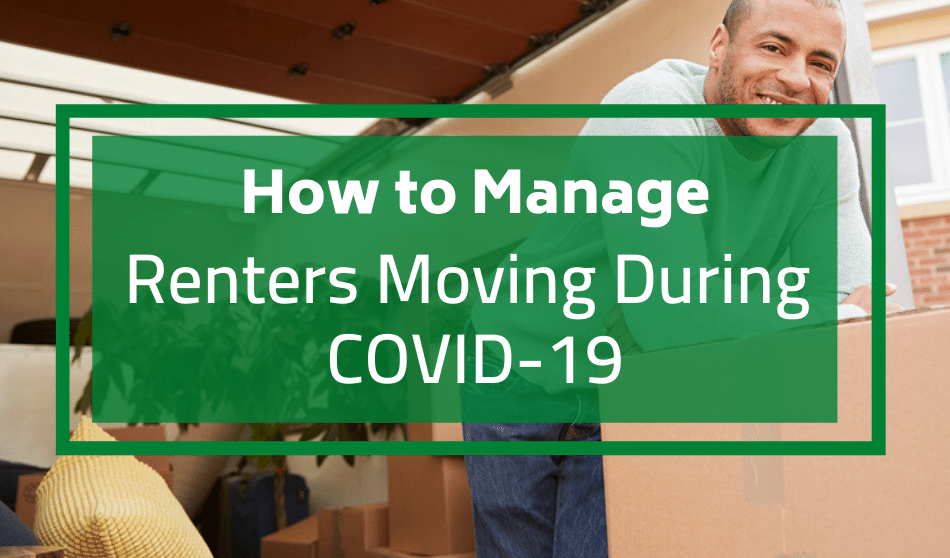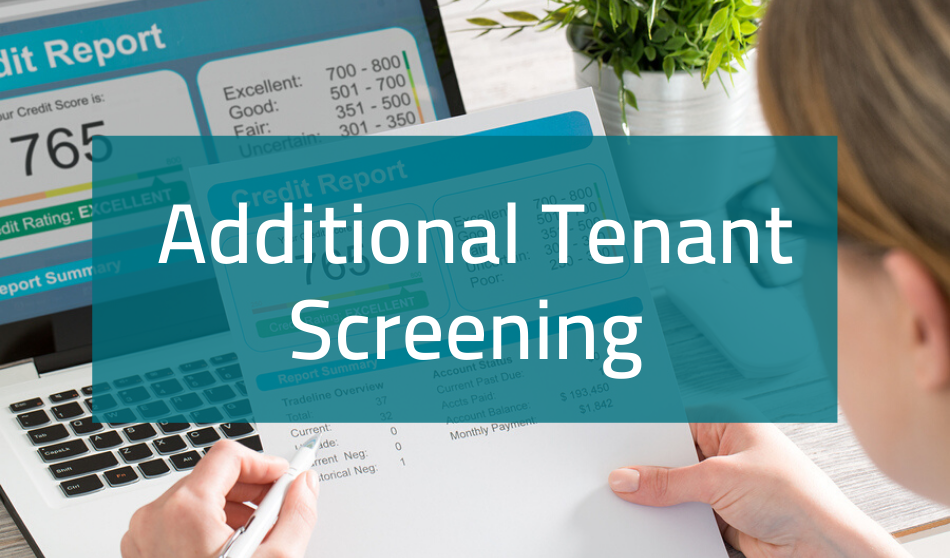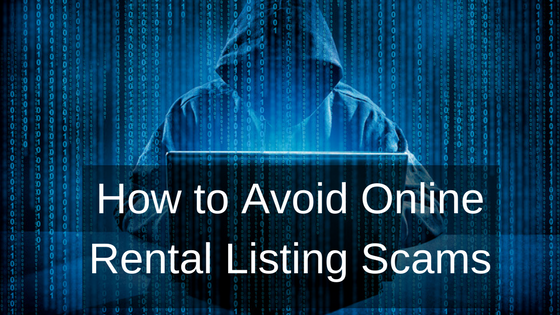
Every business has faced new challenges amidst the coronavirus pandemic, paving the way to a new normal as we navigate solutions to otherwise routine tasks. While several industries have had to come to a devastating stand-still, the rental market is adapting to continue to provide housing to the nation’s renter population.
With national social distancing recommendations and much of the country on official stay-at-home orders, landlords and property managers are finding new ways to handle rent collection, property maintenance, tenant communication, marketing, leasing, and moving.
Renting is an Essential Business
In most of the country, moving is considered essential business and still allowed under most social distancing ordinances. Property managers and landlords are able to facilitate moves and continue to market vacant properties and sign new lease agreements during COVID-19, as long as they follow safe social distancing recommendations.
The move-in and move-out process, commonly referred to as tenant turnover, involves inspecting the property, cleaning the property, fixing any property damage, showing the property, leasing the property, and welcoming a new tenant to the property. All of these processes have had to be adjusted to keep people safe and protected in light of COVID-19.
Changes to Moving During COVID-19
I wanted to find out what the best practices are for tenant turnover during COVID-19.
I reached out to property managers, landlords, and real estate professionals across the country to see how they are handling moving during the coronavirus pandemic at their rental properties.
I asked the following questions:
- How are you managing renters moving in or out of rental properties during COVID-19.
- Are you taking extra precautions?
- How has your welcome process changed?
- Are you using mobile inspections?
- What is meeting new tenants like?
Property managers and landlords have had to make fast adjustments to their standard procedures to ensure their maintenance teams, employees, and tenants are safe.
Updates to Renter Move-In and Move-Out Procedures
Here’s how landlords and property managers are handling moving during the coronavirus pandemic at their rental properties.
- Lock boxes to avoid unnecessary in-person meetings
- Additionally cleaning and sanitizing
- No longer meeting in person for move-in days
- Virtual tours
- Electronic lease signatures
- Online rent payments
- Additional tenant screening
- Renting properties over the phone
- Using video with maintenance teams and contractors
- Limiting the number of people who can visit a property during a showing
- Communicating with tenants via Zoom, Facetime and text messages
- Online rental applications
Lock Boxes
“I actually had to do a move-out and move-in of a unit on Wednesday. One thing we did was actually use lock boxes so that we did not have to meet anyone in person. Prior to the tenant moving out we set up a lock box for them to put their keys in. We had the cleaning company come after they moved out and also used the lock box so they would not need to meet anyone. We made sure that our cleaning company did a more extensive job of cleaning and sanitizing all surfaces than before.
For the actual check-in we did not meet the new tenant in person but used the lock box so that we did not need to meet. We asked them to send us a list of any items that needed to be fixed after.
It has been an interesting challenge to fix items in properties with tenants’ homes 24/7. We do our best to work with tenants and vendors so that they feel safe.”
-Laura Frenkel, landlord, commercial real estate broker, multi-family leasing, and sales for Market Real Estate

Additional Tenant Screening
“I have a vacant unit at the moment, and I’ve been fortunate that my contractor has been willing and able to continue working on the renovations. Once the renovations are finished, I plan to use a virtual tour to show it, combined with electronic lease signature and online rent payment. I’m going to be extremely careful about tenant screening, triple-checking each applicant’s odds of continued employment in the midst of the pandemic. The last thing I want to do is rent to someone who loses their job a week later, and proceeds to live for free in my property for the next six months.”
-Brian Davis, landlord and co-founder of SparkRental.com
Virtual Tours
“To avoid unnecessary exposure to the coronavirus, we have begun to do virtual tours on our rental properties. Our normal business model is to meet with potential renters face to face and holding open houses for them to see the property.
Now, we are renting properties over the phone. We are having our contractors that we have relationships with sending us pictures and videos of the properties after they do the renovations. We have a list of specific things we like to see in the video, such as the mechanicals, the kitchen, the bathrooms, the amenities of the property, and the neighborhood. The biggest struggle with this approach is training the contractors on how to create quality video content, how to set up Google Photos, upload content, and share it with us so that we can create these videos.
The renters like seeing these tours. In the current environment, no one wants to go outside unless it is necessary. The struggles that renters are having is that their leases are up and they are being forced to move. These virtual tours allow renters to filter through properties without having to spend time going to them and risking exposure. A lot of renters feel more comfortable seeing the property before making any financial decisions or even applying to live there.”
-Shawn Breyer, owner of Atlanta House Buyers
Communicating with tenants via Zoom, Facetime and Text
“We are limiting the number of persons that can view our properties at one time. Instead of allowing an entire family view a property, we are only allowing one to two occupants to view.
We are taking extra precautions by having the property cleaned/disinfected prior to move-in. All door knobs, counter tops, bathroom are being wiped down with disinfectant and AC filters are being changed.
We will collect information ahead of time to minimize face to face time. Additionally, we are using FaceTime or Zoom to communicate. We find ourselves communicating more through text messages with new and current tenants at this time.”
-Chris McDermott, investor, real estate broker and co-founder of Jax Nurses Buy Houses
Online Rental Applications
“We have had several properties come up for rent during the COVID-19 time period and we have had to change out showing and application process. The first thing we implemented was to set clear expectations with the prospective tenants before they come to see the property. We let them know that we will only be showing the property to one family at a time and that we will provide hand sanitizer for everyone that would like to enter the property. We let them know that the property manager will be on-site to open the property, but they will not be shaking hands and will be keeping a safe distance so please do not be offended. We have also stopped giving out any paper applications. If they would like an application, we will email them one and they must return the application electronically. So far we have not had any pushback from prospective tenants and all have been happy to help keep everyone safe during these difficult times.”
-Nick Disney, investor, landlord, and owner of Sell My San Antonio House
Final Thoughts
Property managers and landlords have adapted their standard moving procedures to help tenants move into their new homes in the safest way possible. By providing renters with digital ways to view a property and sign a lease agreement, they can continue to offer valuable services during a very confusing time.










I have difficult tenants moving out. What are the current laws on move out inspection? should that be on video? What if they don’t hire an insured mover as all tenants have done, can they bring strangers in an exclusive building to move them under Covid & do those people have to be tested? Can we have an unarmed security guard handle the security of the move?
Aside from placing a hold on evictions related to loss of income due to COVID, there are no federal mandates. The CDC has offered guidelines only. OSHA has made requirements on employers, and state and local agencies have created emergency orders. But, I’ve not heard of any state or local agency regulating those tenant move-out activities you mentioned.
I would caution about taking action that might be considered harassment or discriminatory and would suggest treating a move-out similarly to any move-in you’ve managed since the pandemic began.
Many landlords are moving towards virtual inspections but it sounds to me by your security guard and insurance questions that perhaps your concern runs deeper than Covid. Even if hiring an insured mover is in the lease agreement, I’m not sure how you’d be able to enforce it at the time of move-out. And, if you deny the mover entry (check with your legal advisor prior to refusing entry), you may create a scenario where the tenant refuses to move and you’d have to go through an eviction process months down the road. Oftentimes having a difficult tenant move out quickly under less than ideal circumstances is better than having a tenant refuse to move altogether.
With that, I have four recommendations:
– Discuss this situation with your attorney.
– Check your insurance policy to see if tenant move-out damages are covered.
– Contact your local housing authority to ask about any COVID-related changes to your landlord-tenant regulations.
– Review these CDC recommended guidelines which include a section on tenant turnover.
Wishing you all the best during these difficult times.